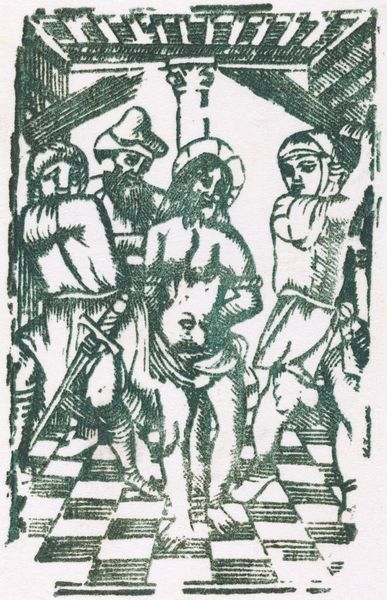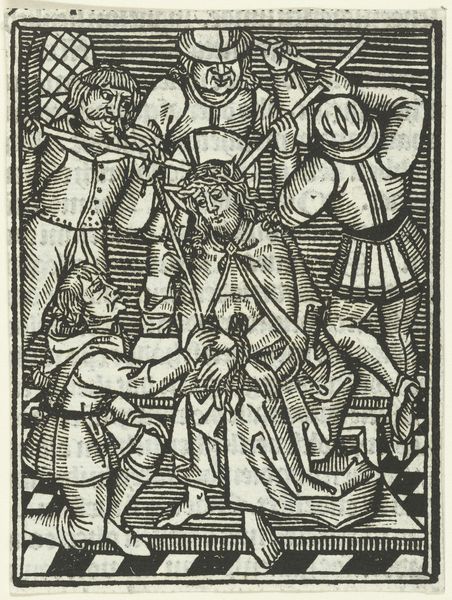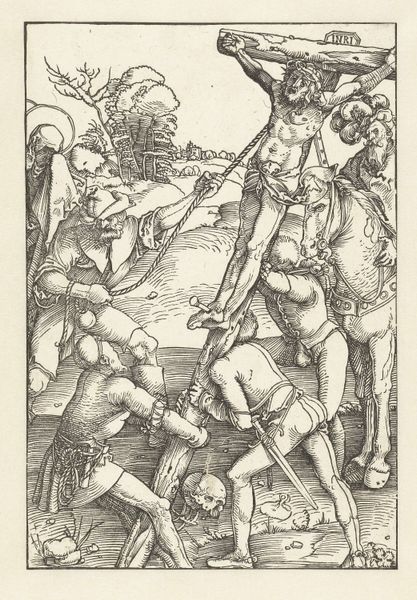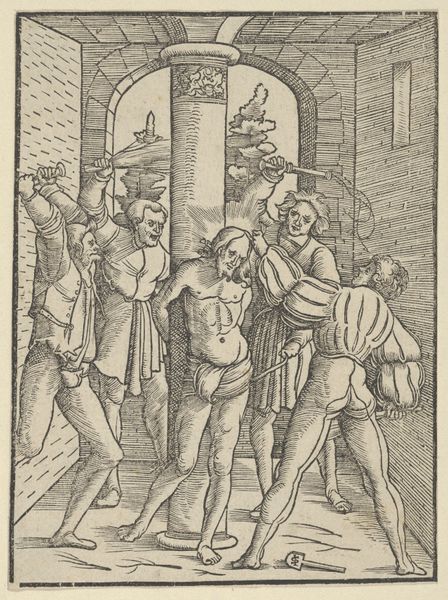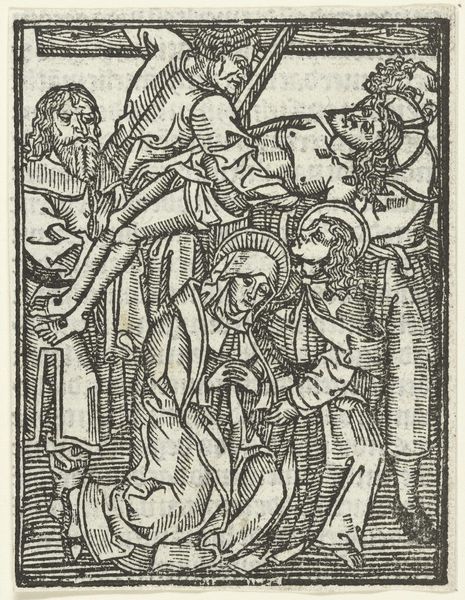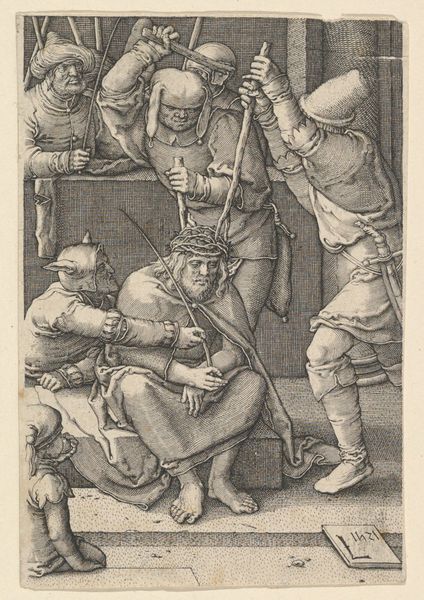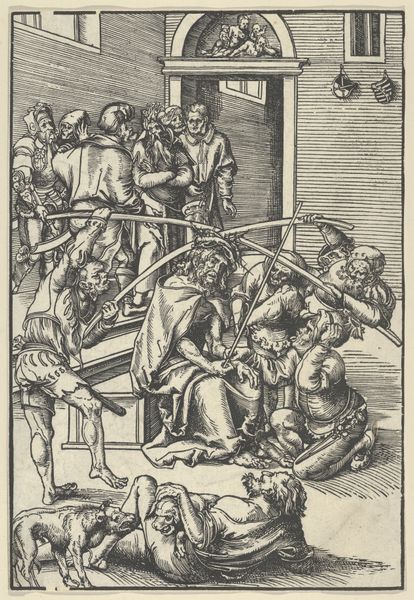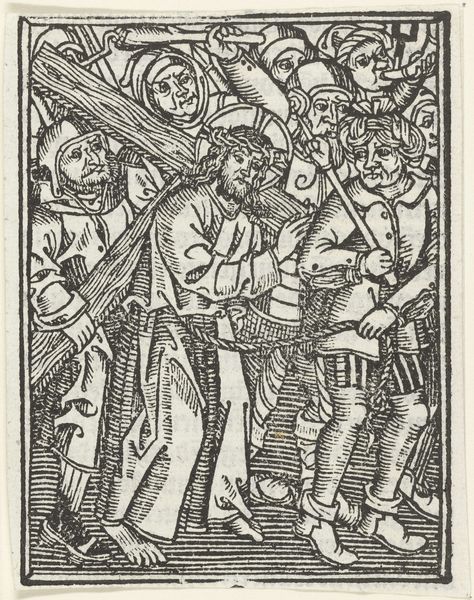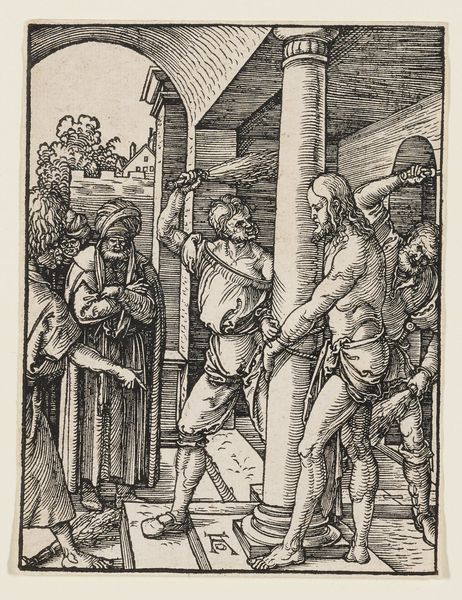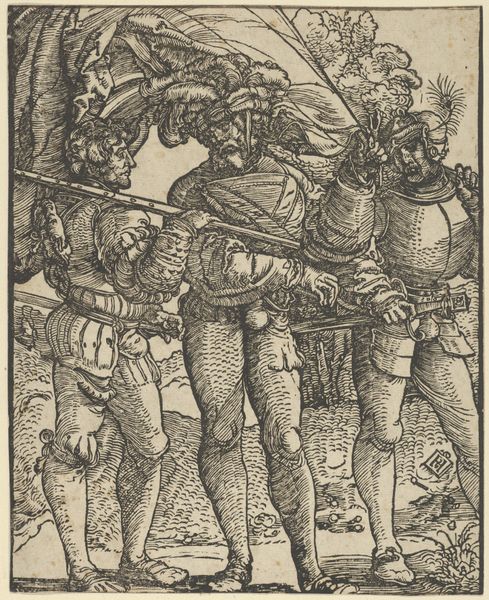
print, woodcut
#
medieval
#
narrative-art
# print
#
figuration
#
woodcut
#
history-painting
Copyright: National Gallery of Art: CC0 1.0
This woodcut presents Christ enduring the flagellation, a premonition of His ultimate sacrifice, surrounded by figures of torment. Notice the recurring motif of bound hands, a symbol seen across cultures, from ancient Greek depictions of captured warriors to Renaissance images of enslaved figures. Here, Christ's bound hands, and the rope that binds him, speak to a loss of agency, a vulnerability echoed in countless depictions of suffering across time. Think of Laocoön wrestling with serpents, his body contorted in agony. Consider how the image of flagellation, a brutal act, evokes a primal response, stirring subconscious fears of pain and humiliation. The rhythmic striking, suggested by the figures' gestures, becomes a macabre dance, a ritual of suffering. This dance resurfaces again and again, in Goya’s depictions of war or Bacon’s tormented figures, each echoing the deep-seated anxieties of the human condition. It's a symbol constantly reborn, taking on new forms, yet forever tethered to its origins in primal suffering.
Comments
No comments
Be the first to comment and join the conversation on the ultimate creative platform.
